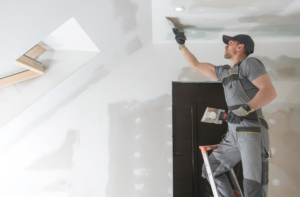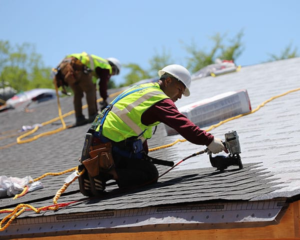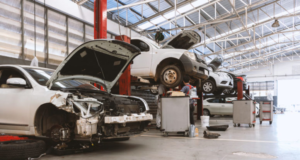Drywall Contractors Phoenix provides a valuable service to homeowners, helping projects run smoothly and efficiently. Whether a new home theater or a fresh coat of interior paint, they have the tools and technical know-how to get the job done right.
When choosing a contractor, check their qualifications, including a valid business license and references from previous jobs. They should also be familiar with local regulations and insurance requirements.

Whether you’re undertaking a minor home renovation or an extensive construction project, having drywall professionals on your side is key to a successful outcome. Professional contractors have years—or even decades—of experience under their belts and can anticipate challenges before they arise. This not only allows them to work more efficiently but can also save you the stress of dealing with a project that goes wrong.
Drywall installation and repairs are complex tasks that require more than just technical knowledge. The ability to creatively overcome obstacles and produce a polished finish that exudes quality is what sets the best drywall specialists apart from their peers. They can spot problems like uneven seams or fissures and make the necessary adjustments to ensure a flawless finished product.
Local drywall contractors understand that time is money, especially when it comes to renovations and construction projects. They can quickly assess and tackle damage and repair it in a timely manner, preventing further problems and saving you the frustration of dealing with a slow-moving project.
When choosing a drywall contractor, it’s important to ask for references from past clients. These references can provide you with valuable insights into the contractor’s professionalism, reliability, and adherence to schedule and budget. They can also give you a firsthand account of the contractor’s ability to perform high-quality work, whether it be in the area of framing or finishing.
Another thing to look for is a drywall contractor’s license number. This is a good indication that they have been vetted by the state and can be trusted to adhere to industry standards. It also shows that they have a commitment to their craft and the safety of their clients.
Hiring a local drywall contractor isn’t just about supporting the community; it’s about ensuring that your drywall project goes smoothly and results in a quality end result. Local drywall contractors are experienced problem-solvers with well-honed skills and the latest tools and technology at their disposal. Their attention to detail and expert craftsmanship makes them the ideal choice for completing your next home improvement project.
Staying Up-to-Date on the Latest Trends
Drywall contractors must keep abreast of the latest innovations in the industry. This includes new tools and software solutions that improve efficiency, precision, and quality. These advancements also help contractors stay competitive in the market and offer innovative solutions to clients. For example, drywall contractors can use automated taping and finishing systems to streamline the process of installation and reduce labor costs. The drywall contractor industry is experiencing rapid growth due to technological innovations, strategic partnerships, and mergers and acquisitions.
When choosing a drywall contractor, look for one that has experience in residential applications and home improvement projects. They should also have a solid reputation and positive testimonials from past clients. Asking for references is another great way to get a firsthand perspective on the work they have done and how they would approach your project.
Choosing a drywall contractor that is licensed and insured will protect you from liability. Licensing requirements vary by state, but generally include a business license, a drywall contractor license, and insurance to cover damages and injuries on the jobsite. It is also important to make sure the drywall contractor has an established line of credit with their suppliers and can provide proof that they are financially stable.
Another important consideration is finding out if the drywall contractor is bonded and insured. This will protect you in the event that they go bankrupt during a project and can also help ensure they are following industry safety standards. If you are unsure about the licensing requirements in your area, contact your local government or an attorney for clarification.
While it may seem like a daunting task to find the right drywall contractor for your next project, taking the time to research and compare your options will ensure that you get the best results. Using these tips, you can rest assured knowing that the professional you hire will deliver superior workmanship and leave your project looking great for years to come. After all, the drywall is an essential part of any home remodel or new construction project. You want to partner with a contractor that understands the importance of every single panel they hang.
Warranties and Service Guarantees
A drywall contractor should be willing to stand behind their work and provide peace of mind for clients. That’s why many reputable contractors offer warranties and service guarantees that protect clients against any shortcomings in their performance or workmanship. These promises typically cover the duration of a project and stipulate how any claims will be addressed.
When vetting potential drywall contractors, ask for examples of their portfolio during an initial meeting. Any professional worth their salt will be eager to show off their past projects and demonstrate their skills and craftsmanship. You can also scour online reviews and testimonials to get a sense of their client satisfaction and expertise.
It’s important to read through any warranty document with a fine-tooth comb. It’s essential to understand what’s covered, the duration of coverage and any maintenance requirements that the homeowner must undertake.
If any unforeseen issues arise, the drywall contractor should be willing to address them quickly and efficiently. That’s why it’s important to choose a company with good communication skills that are prompt and responsive to clients’ needs.
Most drywall contractors and home builders offer statutory workmanship warranties, which promise that a project will be completed in a workmanlike manner. Statutory warranties are a legal requirement in some states and help to ensure that both contractors and homeowners are held accountable for their actions.
The warranty should clearly define which parts of a new construction are covered by the guarantee, such as doors and trim, drywall, paint, heating and ventilation, air conditioning (HVAC) and plumbing. Additionally, it should detail any exceptions to the warranty, such as appliance manufacturer’s warranties or certain weather-related issues like ground movement or insect damage.
Portfolios and References
When it comes to selecting a drywall contractor for your project, there are several factors that should be considered. Aside from experience level and skill mastery, a quality drywall company should provide detailed estimates and effective communication throughout the entire process. They should also offer warranties and service guarantees to ensure complete customer satisfaction.
When evaluating potential contractors, it’s a good idea to request a portfolio of their previous work. This will allow you to get a visual representation of their craftsmanship and attention to detail. Additionally, you should ask for referrals from past clients to get firsthand insights into their work quality and professionalism.
You should also find out about their pricing structure and payment terms. For example, some drywall companies may require a deposit upfront and the remainder upon completion of the project. Others may be willing to work out a financing plan with you. However, before you agree to any terms, make sure you understand how these arrangements can impact your credit.
It’s also a good idea to verify that your drywall contractor has the necessary licensing and insurance coverage. This will protect you from any unforeseen legal issues that could arise during the course of your project. In addition to general liability, you should also check that your drywall company has commercial auto and inland marine insurance. These policies can help cover the cost of damages and injuries incurred by contractors while transporting equipment and supplies to and from job sites.
Choosing the right drywall contractor can make all the difference in ensuring the success of your construction or renovation project. By weighing in the above factors, you can select a reputable contractor that meets your needs and provides exceptional results. By following these tips, you can be confident that your drywall project will be completed on time and within budget. So take the time to review the information provided, consult with trusted advisors or professionals as needed, and make a well-informed decision that will ensure the best possible outcome for your project. The result will be a finished space that is both functional and beautiful.








